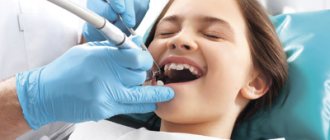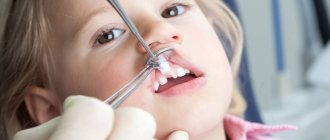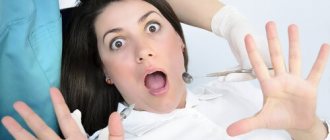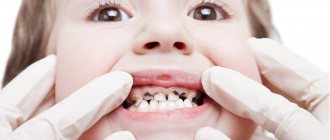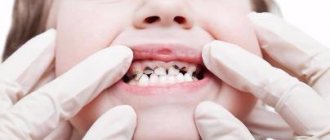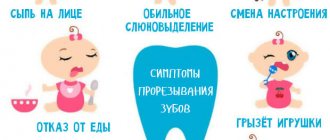The tooth extraction procedure is a surgical procedure. During this operation, the tooth and root are pulled out from the gum. Despite the apparent simplicity of the manipulation, the process can take a long time, especially if the case is complex and requires increased attention.
According to many patients, all dentists want to remove the tooth immediately. This is wrong. Qualified specialists at Dr. Jacques' clinic strive to preserve the beauty and health of natural teeth. If there is even a small chance to cure a tooth, they will take it. Well, if the case is serious and removal cannot be avoided, our dental surgeons with extensive experience will perform tooth extraction surgery quickly and painlessly.
How to pull out a baby tooth without pain
A baby is born without teeth because he does not need to chew food - breast milk or formula passes easily into the stomach.
At four to five months, the first milk teeth appear, which gradually fall out at five to seven years, being replaced by permanent teeth. You don’t have to go to the dentist to pull out a loose tooth—you can do it at home in a variety of ways. Before the procedure, it is important to make sure that the milk jug is ready for removal and that the child has no contraindications. Also, do not forget about cleaning the oral cavity after the procedure.
When can you pull out a child’s baby tooth at home?
Changing teeth is a natural and necessary process of development of the maxillofacial apparatus. The peculiarity of the structure of milk jugs is that they have short nerve roots, which makes their loss painless. In most cases, changing milk jugs occurs independently and does not require outside intervention. It is possible to remove a temporary tooth in cases where it is well loosened, but at the same time it interferes with speaking and chewing. In such situations, it is permissible to carry out the manipulation at home without visiting a doctor.
How to understand that you can pull out a child’s baby tooth:
- there is no pain or blood when the milkman staggers;
- healthy pink gums;
- the tooth moves easily back and forth in the hole;
- no stomatitis, gingivitis, tonsillitis;
- The child feels well and is healthy.
Diagnosis of an abscess
The dental clinic conducts a comprehensive examination of the abscess, which includes:
- Collection of medical history. Complaints of persistent localized pain or swelling. Increased discomfort when biting. The cause of decreased immunity and the presence of common diseases are determined.
- Visual inspection. The doctor determines how swollen and reddened the gums are, the tissue at the root of the tooth, and the gingival margin. Periodontal pockets are probed.
- Pulp vitality test (PVT). With an apical abscess, the nerve fibers of the dental pulp are damaged, but with a periodontal abscess, the pulp is viable.
- Physical diagnostics. On palpation, the lump is soft and fluctuates when pressed (fluctuation). Severe sensitivity and sharp pain when percussing (tapping on the tooth). The mobility of units is determined.
- Radiography. X-ray images show the source of infection - a dark cavity in the periodontal pockets and swelling of the soft tissue. The affected pulp looks like an empty tooth socket.
- Other clinical tests. A bacterial culture is taken to identify the type of pathogen (infection), and the analysis determines the body’s immune response. The clinic selects material and checks:
- General blood analysis. With an abscess, an increased level of leukocytes is observed.
- Analysis of urine. The presence of protein and red blood cells indicates an inflammatory process.
Contraindications to tooth extraction at home
Before choosing a method to extract a tooth yourself, it is important to make sure that this manipulation will not cause harm. The presence of the following manifestations is a contraindication for removing thrush at home:
- redness of the gums;
- strong adhesion of the tooth to the jaw;
- thickening of the gums due to swelling;
- the presence of blood or pain when the milkman staggers;
- increased body temperature, signs of acute respiratory viral infection, sore throat;
- the child has severe fear.
When performing a manipulation, you cannot hold the child by force, otherwise the fear of performing procedures in the mouth will remain for life. In all doubtful and complex cases, you should contact a specialized specialist - a pediatric dentist.
Children often experience carious lesions in primary teeth, leading to their partial destruction. Such situations require a mandatory visit to a doctor with subsequent treatment or removal. Even severely damaged carious teeth cannot be pulled out on your own - this will lead to pain and injury to the gums and lips.
